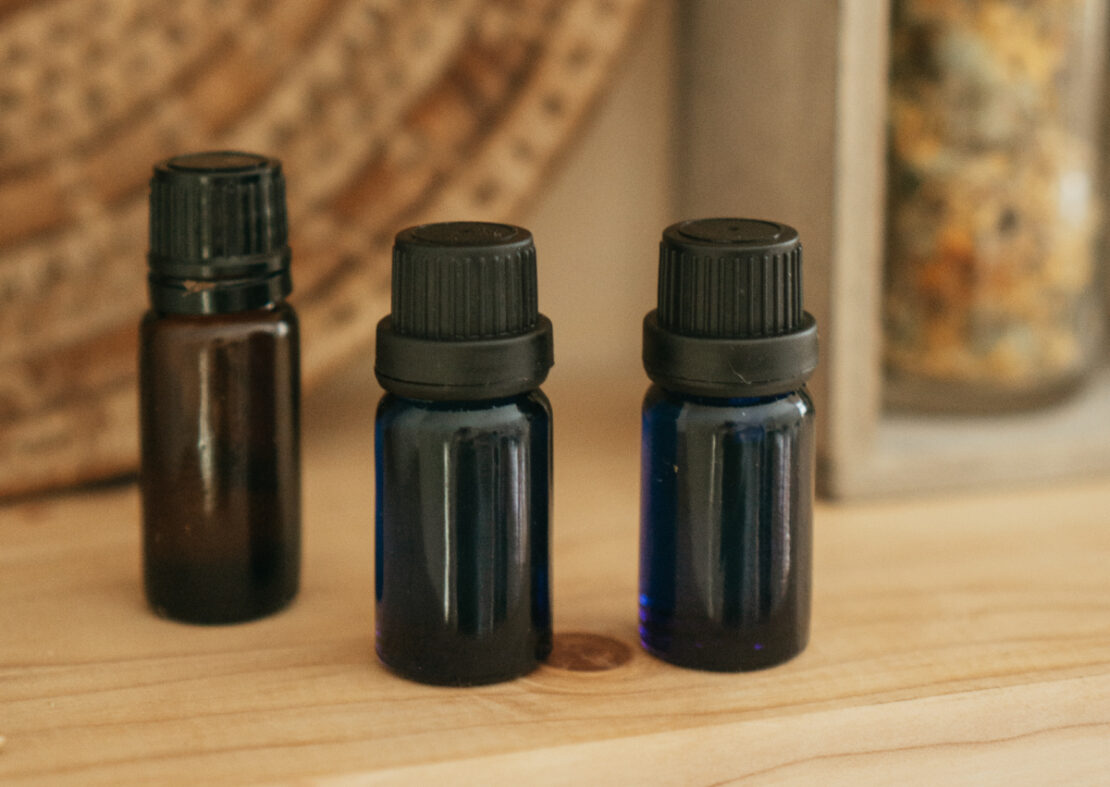
Hot ‘n’ Spicy Essential Oils for Winter
Winter season…snow season…holiday season…fireplace season…conifer season…cocoa and tea season…cold ‘n’ flu season. For so many of us in the Northern Hemisphere, winter means cooler temperatures, more time indoors, and more concerns about viral respiratory diseases. In this article, we will go over various essential oils for winter.
This time of year is perfect for creating essential oil blends both to bring the beautiful aromas of the outdoors into our homes and to ease upper respiratory disease symptoms. During the holiday season, we may also replicate the aromas of spicy baked goods to comfort us and make us smile.
Many of the essential oils we choose for these blends are what we sometimes call “hot ‘n’ spicy” oils. What do we mean by “hot ‘n’ spicy?” How can we use these oils safely? Is it safe to diffuse these oils? What benefits can they offer? In this post, I will demystify some of these oils that we especially love to use during the winter.
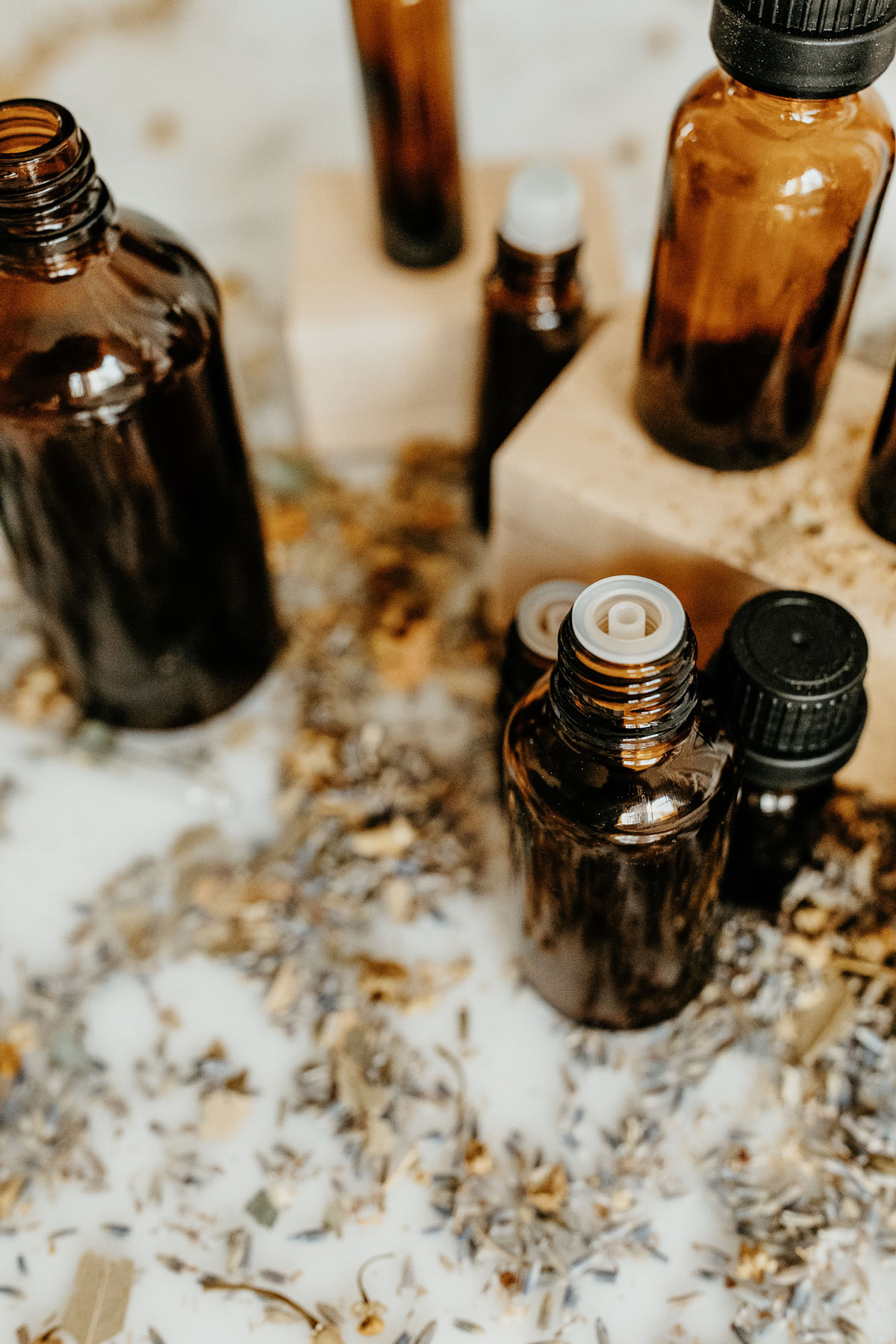
What Do We Mean By “Hot ‘n’ Spicy?”
Using “hot” to describe an essential oil is similar to using “hot” to describe a spicy pepper. It refers to how an essential oil feels when you put it directly on your skin, not to any temperature difference between that and any other oil. Like with spicy peppers, this feeling is caused by chemicals in the pepper or essential oil that irritate the skin or mucous membranes, and not all hot oils feel the same. Some are more irritating than others, and some may not feel “hot” at all in small amounts or when highly diluted.
Some “hot” oils are:
- Cassia bark/leaf (Cinnamomum cassia, syn. Cinnamomum aromaticum)
- Cinnamon bark (Cinnamomum verum, syn. Cinnamomum zeylanicum)
- Clove bud, leaf, or stem (Syzygium aromaticum, syn. Eugenia caryophyllata)
- Oregano (Origanum vulgare)
- Thyme (Thymus vulgaris)
Somewhat hot oils include:
- Peppermint (Mentha x piperita)
- Wintergreen (Gaultheria fragrantissima, syn. Gaultheria procumbens)
- Sweet Birch (Betula lenta)
- All of these feel cold to a point, then adding more drop(s) will produce a burning sensation.
Warm feeling oils include:
- Ginger (Zingiber officinale)
- Black Pepper (Piper nigrum)
Any essential oil that irritates your skin or mucous membranes may feel “hot.” In some cases, such as when you use ginger or black pepper to address localized pain, this warm feeling is desirable, as it means the irritation, although mild, is encouraging blood to come to the area, which may ease discomfort and encourage the body’s natural healing processes. In other cases, such as when you use too much peppermint or when you apply cinnamon bark, oregano, or thyme directly onto your skin, the burning sensation may be anywhere from uncomfortable to excruciating and may cause a more lasting skin reaction.
If you get too much of an irritating oil, of any kind, on your skin and want to ease the irritation, wash the area with mild soap and water to wash off any residual essential oil. Apply a non-irritating fixed oil, such as fractionated coconut oil, olive oil, avocado oil, or any vegetable oil you may have in your kitchen, to the area. Do not apply any other essential oil to the area until after the irritation has fully resolved.
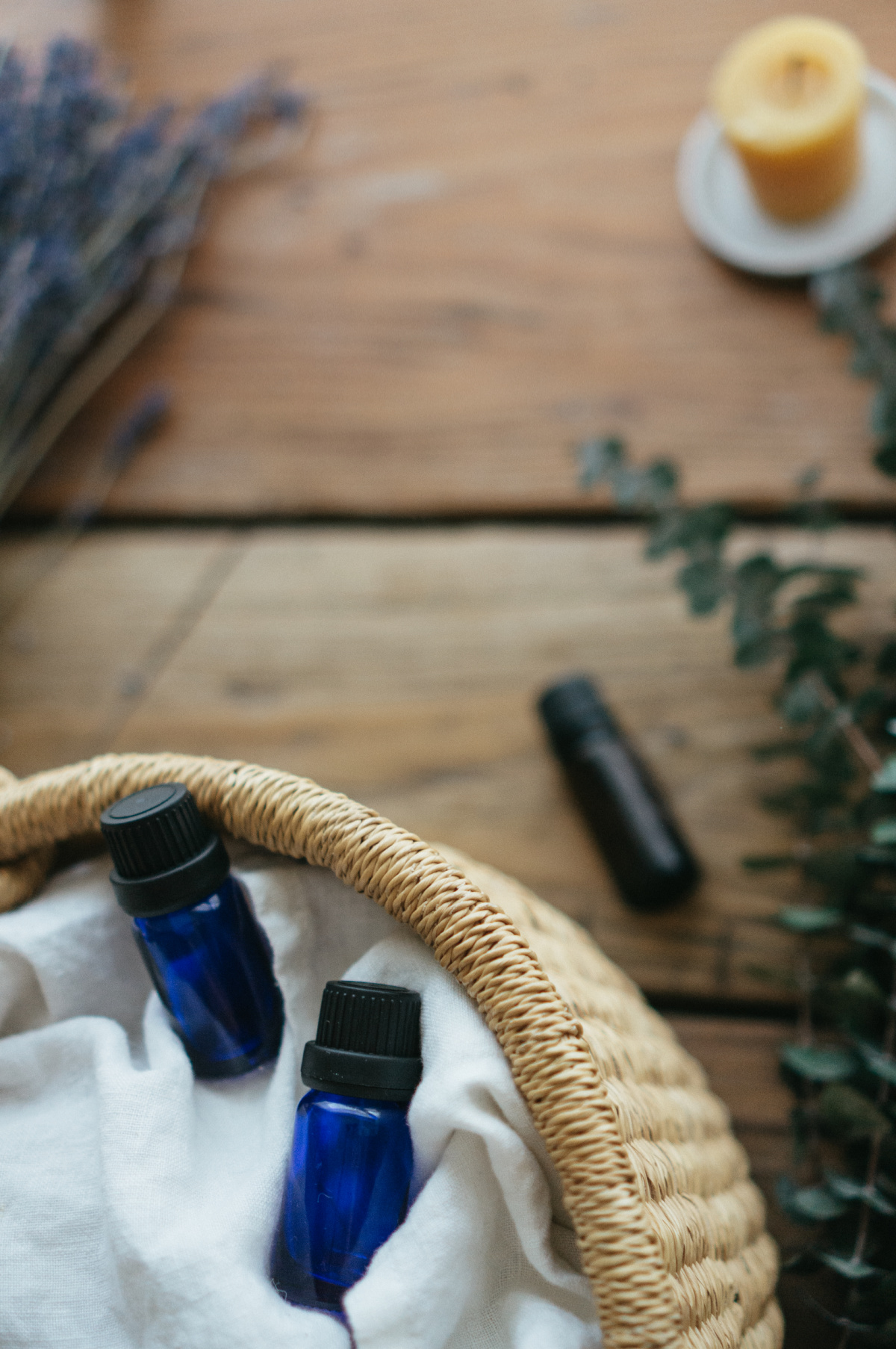
The Energetics of Essential Oils According to Chinese Medicine
(Holmes, 2016; Holmes, 2019)
Warm to hot (used to address cool to cold conditions)
- Black Pepper
- Cinnamon bark
- Clove bud
- Ginger
- Oregano
- Thyme ct. thymol
Neutral (neither hot nor cold)
- Peppermint
- Thyme ct. linalool
Cool to cold (used to address warm to hot conditions)
- Wintergreen
- Sweet Birch
Identification
Be sure you know which essential oil you are using. Depending on which plant part is used, such as leaves or stems, the resulting essential oils may differ in their chemistry and safety and could have distinctive usages and energetics. There may be different chemotypes of the same essential oil with different safety guidelines for each chemotype. Some different essential oils have similar common names while others have different common names for different brands. The best way to navigate this confusion is to know the botanical name, plant part, chemotype (a plant that has a distinctly different chemistry from other plants of the same species) – for those essential oils with multiple chemotypes, and sometimes even the balance of constituents, of the oil you are purchasing.
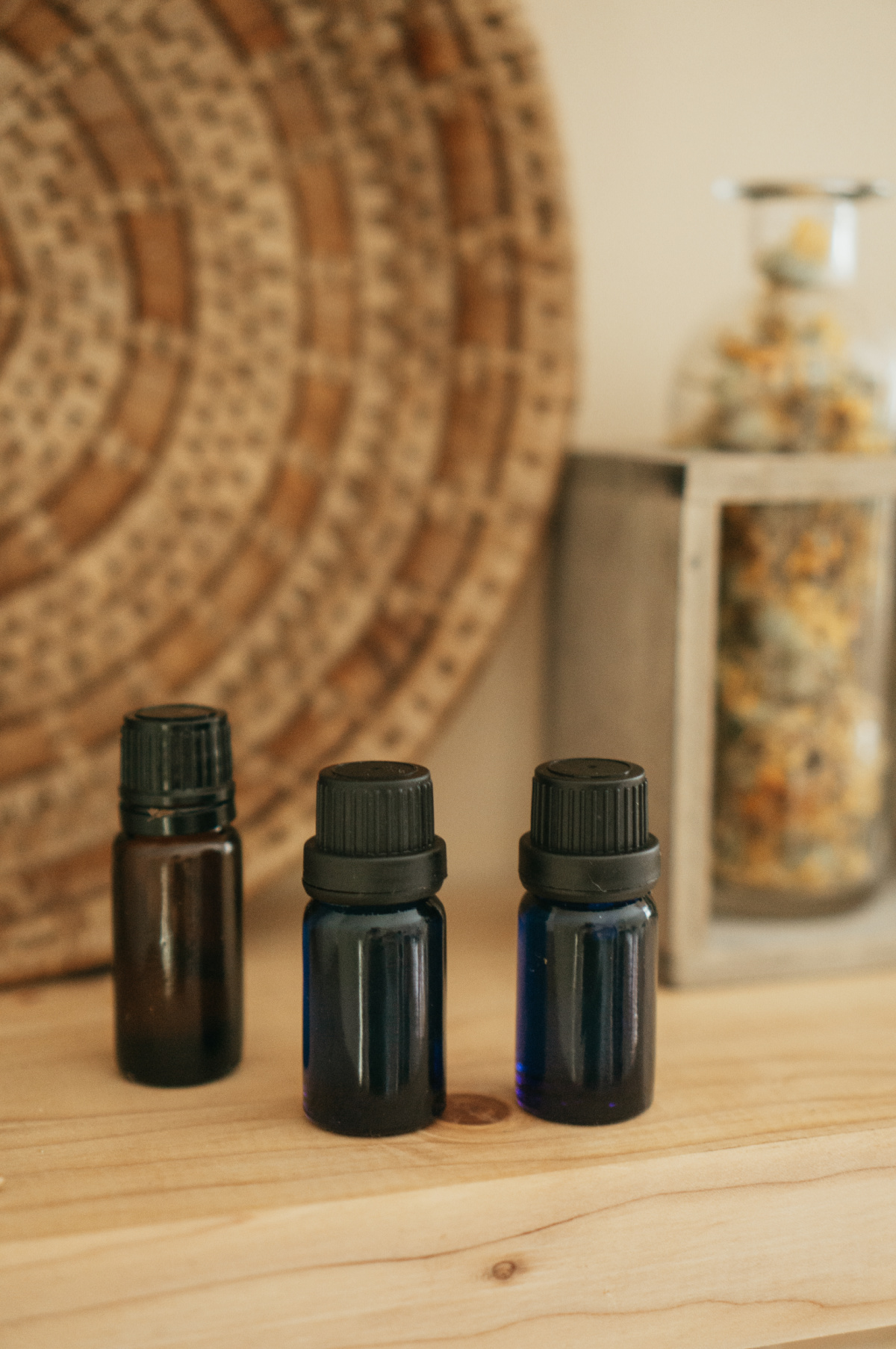
Some Guidelines For Identifying Popular Winter Essential Oils
Both true cinnamon (Cinnamomum verum, syn. Cinnamomum zeylanicum) and cassia cinnamon (Cinnamomum cassia, syn. Cinnamomum aromaticum) produce two essential oils, which have very different chemistries and safety guidelines. The essential oils distilled from the bark are high in cinnamaldehyde, while the leaf oils are higher in eugenol. True cinnamon leaf’s chemistry is more similar to that of clove bud/leaf/stem than to cinnamon bark essential oil’s chemistry.
Clove also produces clove bud, clove stem, and clove leaf oils. The aromas of these three essential oils are quite different, although they have similar chemistries.
There are multiple varieties of thyme (Thymus vulgaris) essential oil with different properties. Much of the thyme essential oil we see in retail shops contains high levels of thymol and carvacrol, both of which are very caustic on the skin, but there are several other chemotypes as well. One chemotype contains somewhat lower levels of thymol and higher levels of linalool, providing a chemotype that is less caustic while still providing the germ-fighting ability of the high-thymol chemotype essential oil. If a dermal application of thyme is warranted, choose thyme ct. linalool, if possible (Schnaubelt, 1999).
Safety – Essential Oils for Winter
Essential oil safety guidelines for these “hot” oils differ, depending on how they are being applied and used. We will address topical application and diffusion or direct inhalation; since these oils can also irritate mucous membranes, internal use of these essential oils requires extra care that is beyond the scope of this article.
If you choose to apply cinnamon bark, clove bud, oregano, or thyme directly to the skin, it is vital you pay attention to dermal safety guidelines, dilute the oils appropriately, and use them only for short-term applications. If you are developing products for sale, you may need to follow other regulatory guidelines, but the authors of Essential Oil Safety, 2nd edition (Tisserand & Young, 2014) recommend the following maximum concentrations for these essential oils:
| Cassia bark/leaf (Cinnamomum cassia, syn. Cinnamomum aromaticum) | Dermal Maximum: 0.05% | Other concerns: May inhibit blood clotting; not appropriate for sensitive individuals, such as children under 2 years old, the elderly, or during pregnancy. | |
| Cinnamon bark (Cinnamomum verum, syn. Cinnamomum zeylanicum) | Dermal Maximum: 0.07% | Other concerns: May inhibit blood clotting; not appropriate for sensitive individuals, such as children under 2 years old, the elderly, or during pregnancy. | |
| Cinnamon leaf (Cinnamomum verum, syn. Cinnamomum zeylanicum) | Dermal Maximum: 0.6% | Other concerns: May inhibit blood clotting; not appropriate for sensitive individuals, such as children under 2 years old, the elderly, or during pregnancy. | |
| Clove bud (Syzygium aromaticum, syn. Eugenia caryophyllata) | Dermal Maximum: 0.5% | Other concerns: May inhibit blood clotting; not appropriate for sensitive individuals, such as children under 2 years old, the elderly, or during pregnancy/breastfeeding. | |
| Clove leaf or stem (Syzygium aromaticum, syn. Eugenia caryophyllata) | Dermal Maximum: 0.6% | Other concerns: May inhibit blood clotting; not appropriate for sensitive individuals, such as children under 2 years old, the elderly, or during pregnancy/breastfeeding. | |
| Oregano (Origanum vulgare) | Dermal Maximum: 1.1% | Other concerns: May inhibit blood clotting; not appropriate for sensitive individuals, such as children under 2 years old, the elderly, or during pregnancy/breastfeeding. | |
| Thyme (Thymus vulgaris ct. thymol, Thymus vulgaris ct. carvacrol) | Dermal Maximum: 1.3% | Other concerns: May inhibit blood clotting; not appropriate for sensitive individuals, such as children under 2 years old, the elderly, or during pregnancy/breastfeeding. |
| Thyme (Thymus vulgaris ct. linalool) | Dermal Maximum: none noted | Other concerns: No known contraindications. | |
| Peppermint (Mentha x piperita) | Dermal Maximum: 5.4% | Other concerns: Cardiac fibrillation; G6PD enzyme deficiency; do not apply near the face or nose of infants or children. | |
| Wintergreen (Gaultheria fragrantissima, syn. Gaultheria procumbens) | Dermal Maximum: 2.4% | Other concerns: May inhibit blood clotting; not appropriate for sensitive individuals, such as children under 2 years old, the elderly, people with salicylate sensitivity, or during pregnancy/breastfeeding. | |
| Sweet Birch (Betula lenta) | Dermal Maximum: 2.5% | Other concerns: May inhibit blood clotting; not appropriate for sensitive individuals, such as children under 2 years old, the elderly, people with salicylate sensitivity, or during pregnancy/breastfeeding. | |
| Ginger (Zingiber officinale) | Dermal Maximum: none noted | Other concerns: No known contraindications. | |
| Black Pepper (Piper nigrum) | Dermal Maximum: none noted | Other concerns: No known contraindications. | |
All dermal maximums listed here are taken from Tisserand & Young, (2014.) If you are making products for sale, you may have a different standard you must meet.
Essential Oil Safety In The Bath
Around the holidays, you may see recipes for bath salts containing peppermint or cinnamon bark essential oil or you may see such bath salts at your local craft fair. My recommendation is to stay away from these recipes and products. These are not essential oils you want anywhere near the very sensitive areas of your body you will be placing in a bathtub, never mind how your eyes might feel if you accidentally splash water in them. Instead, you might use your favorite holiday diffuser blend or after-bath lotion to surround yourself with those holiday aromas as you relax in the bath. Do not use cinnamon, cassia, peppermint, oregano, or thyme in the bath.
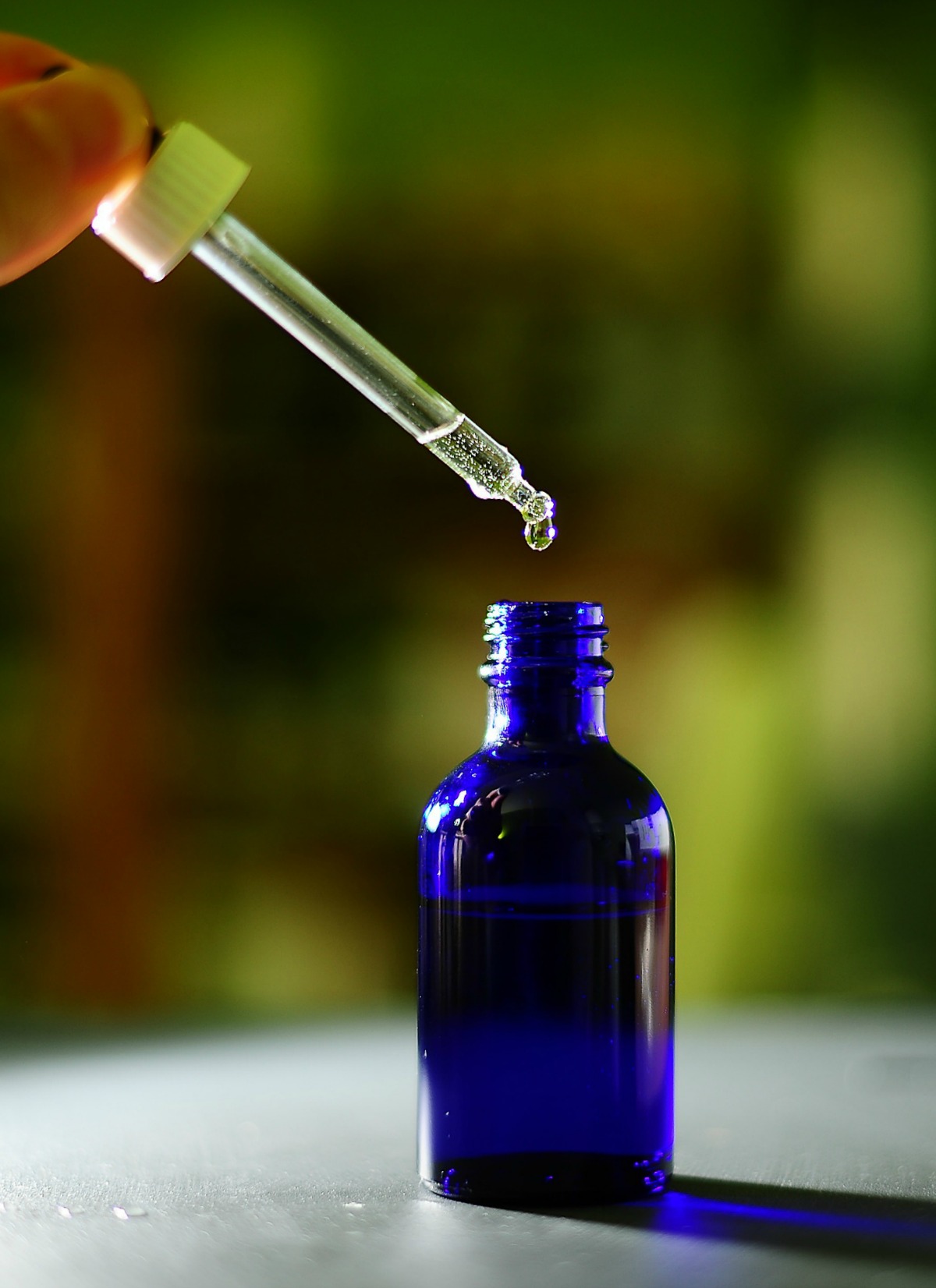
Skin – Topical Safety and Muscle Warmer Recipe
Cinnamon can cause irritation and sensitivity reactions for some people, even when it is properly diluted. There are those who would say that cinnamon should never be used topically. At best, it is highly sensitizing and should be used topically with great care and highly diluted, if at all. A 0.05% dilution is one drop of essential oil in 100 mL of carrier oil. Clove (bud/leaf/stem) and cinnamon leaf, on the other hand, are easier to use, as 0.5% is 2 drops of essential oil in 10 mL of carrier oil. None of these (clove or cinnamon essential oils) should be used during pregnancy, with children, or with sensitive individuals.
Use this essential oil blend for muscles that feel cold, tight, or sore. If you aren’t pleased with the aroma, you can include one of the following essential oils, maintaining a total number of 18 drops: sweet orange (Citrus sinensis), cypress (Cupressus sempervirens), lavender (Lavandula angustifolia), or eucalyptus (Eucalyptus radiata).
2-ounce glass bottle Muscle Warmer Essential Oil Blend
1 3/4 fluid ounces carrier oil of choice (herbal infused oil, jojoba, fractionated coconut oil, etc.)
10 drops ginger (Zingiber officinale) essential oil
8 drops juniper berry (Juniperus communis) essential oil
5 drops black pepper (Piper nigrum) essential oil
4 drops marjoram (Origanum majorana) essential oil
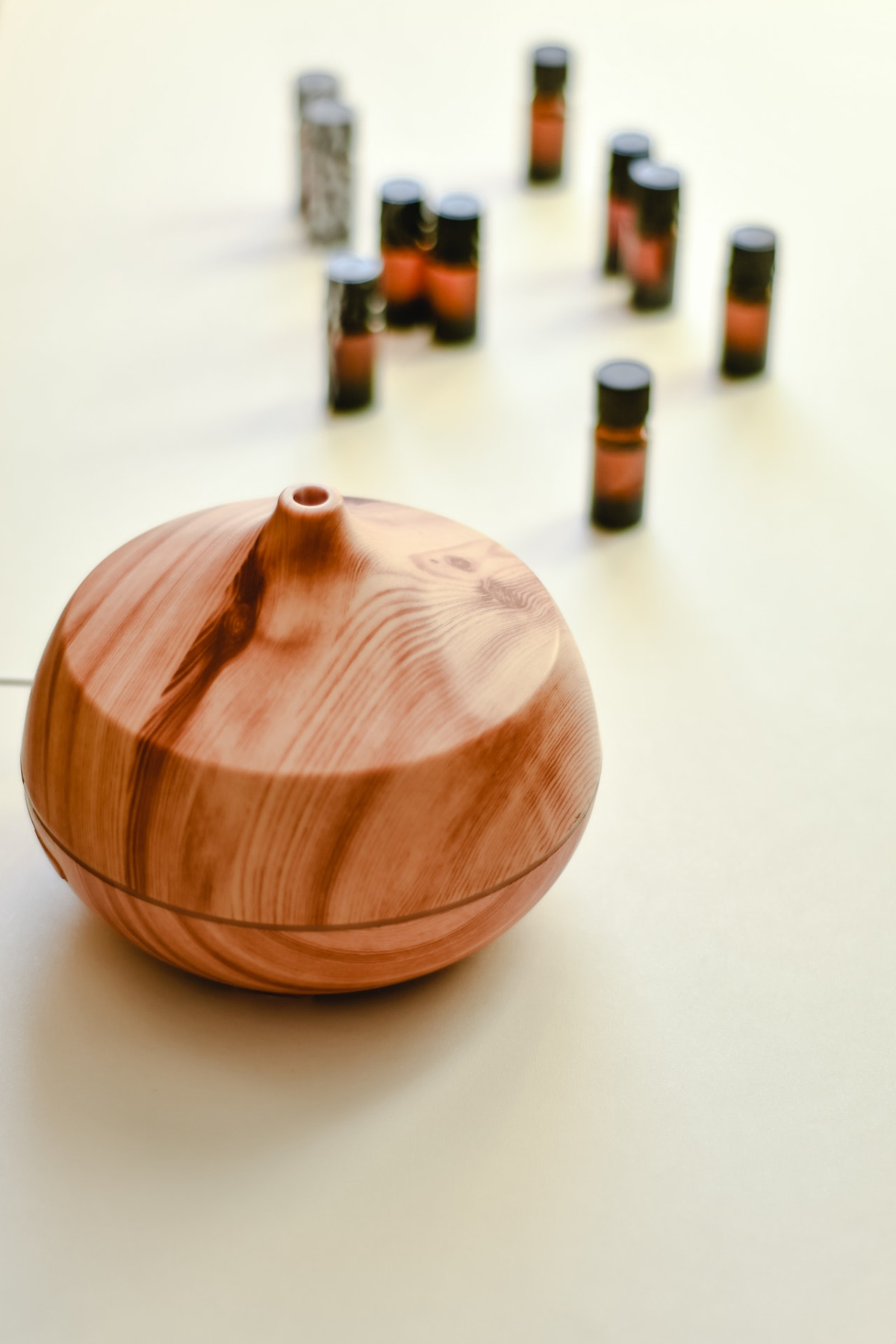
Tips On Diffusing Essential Oils
When we think of winter aromas, we often think of spicy cinnamon, clove, and peppermint, as well as outdoorsy conifers. Diffusing can offer an alternative to topical use for some of these essential oils. Guidelines for diffusing are less specific, but general guidelines are helpful here. Use an ultrasonic water-based diffuser, not a nebulizer or diffuser that diffuses the essential oils directly into the air. Use less essential oil. Diffuse for 10-15 minutes at a time, spaced 2-3 hours apart.
If, at any time, the diffused air becomes irritating, turn the diffuser off and ventilate the room. Allow any pets and children to leave the area if they desire to do so. Remember that if you are around the diffuser for an extended period, you will stop smelling it. Do not add more essential oil. You have probably grown accustomed to the aroma and adding more will make it too strong.
Cleaning With Essential Oils
While these hot essential oils may not be the best choices for topical applications or concentrated inhalation use, they are powerful antimicrobials (Battaglia, 2018) making them perfect candidates for your winter cleaning solutions. Who thought a clean bathroom could smell like gingerbread? Be sure to wear gloves and work in a well-ventilated area. If possible, allow the cleaning solution to sit on surfaces for several minutes to give the essential oils time to act on any microbes that may be present. Then wipe up any remaining residue. Here are two cleaning recipes that feature hot ‘n’ spicy essential oils.
Do not spray on surfaces that may be damaged by essential oils. For cleaning purposes only. Not to be used on people or pets.
4-fluid ounce glass spray bottleGeneral Surface Cleaning Spray
1 ½ fluid ounce ethanol (at least 150 proof, or 75%)
1 ½ fluid ounce distilled water
approx. 1 fluid ounce white vinegar
30 drops sweet orange (Citrus sinensis) essential oil
16 drops cinnamon bark (Cinnamomum verum) essential oil
12 drops clove bud (Syzygium aromaticum) essential oil
8 drops oregano (Origanum vulgare) or thyme (Thymus vulgaris) essential oil
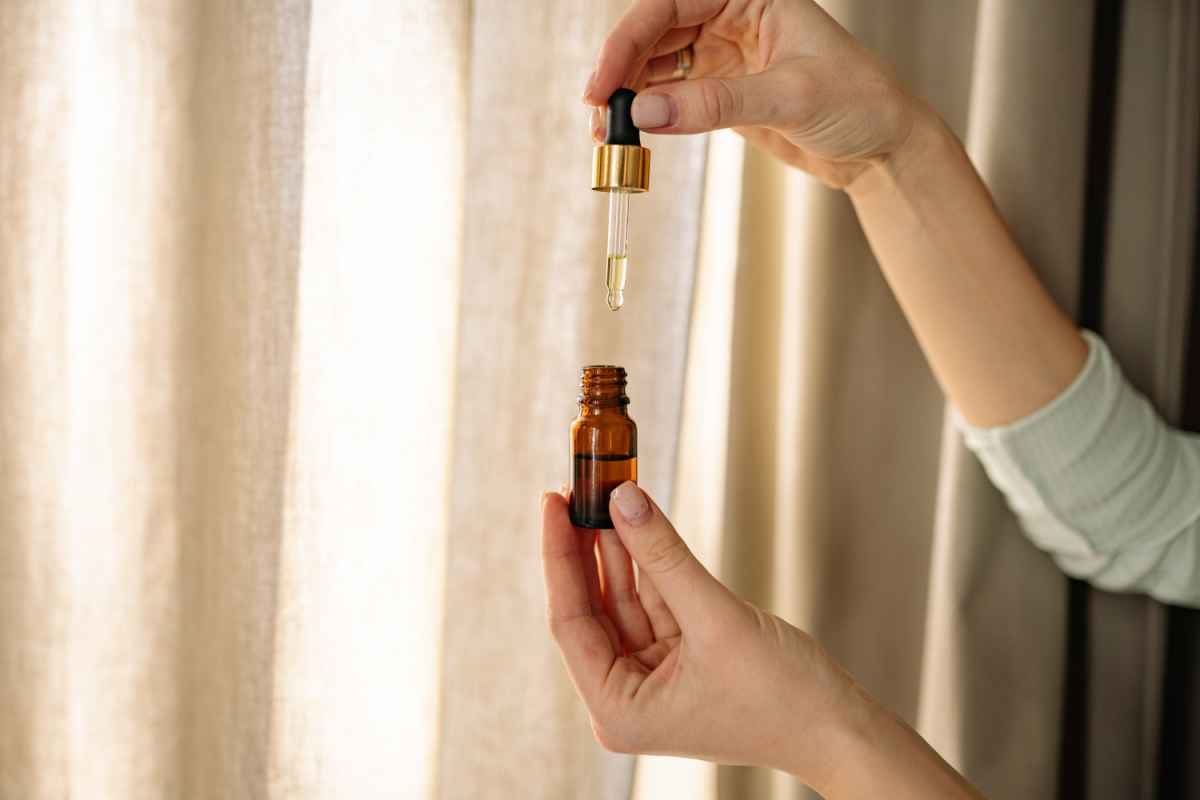
This essential oil blend will freshen up your bathroom in no time!
5-mL amber glass bottle with orifice reducerWinter Bathroom Freshener
40 drops sweet orange (Citrus sinensis) essential oil
15 drops ginger (Zingiber officinale) essential oil
15 drops cinnamon leaf (Cinnamomum verum) essential oil
10 drops clove bud (Syzygium aromaticum) essential oil
In Closing,
We often associate fall, winter, and winter holidays with warm spices, like cinnamon and clove. These spices are also common ingredients in germ-fighting essential oil blends, which we tend to use more often during the winter cold and flu season. Knowing when and how to use these oils and these blends can help you keep germs at bay while preventing you from experiencing irritation or sensitization issues. Remember that we can still use the herbs and spices themselves in situations where the essential oils may not be appropriate, such as cinnamon sticks in a potpourri warmer instead of cinnamon essential oil in a diffuser. This way we can stay healthy, warm, and safe during this chilly time of year.
For related reading, see:
Safe & Powerful Alternative “Thieves” Blends for the 1%
Top Essential Oils for Winter Wellness
Citrus and Spice: DIY All-Purpose Cleaner
How to Make Essential Oil Solid Perfume To Warm Your Winter Romance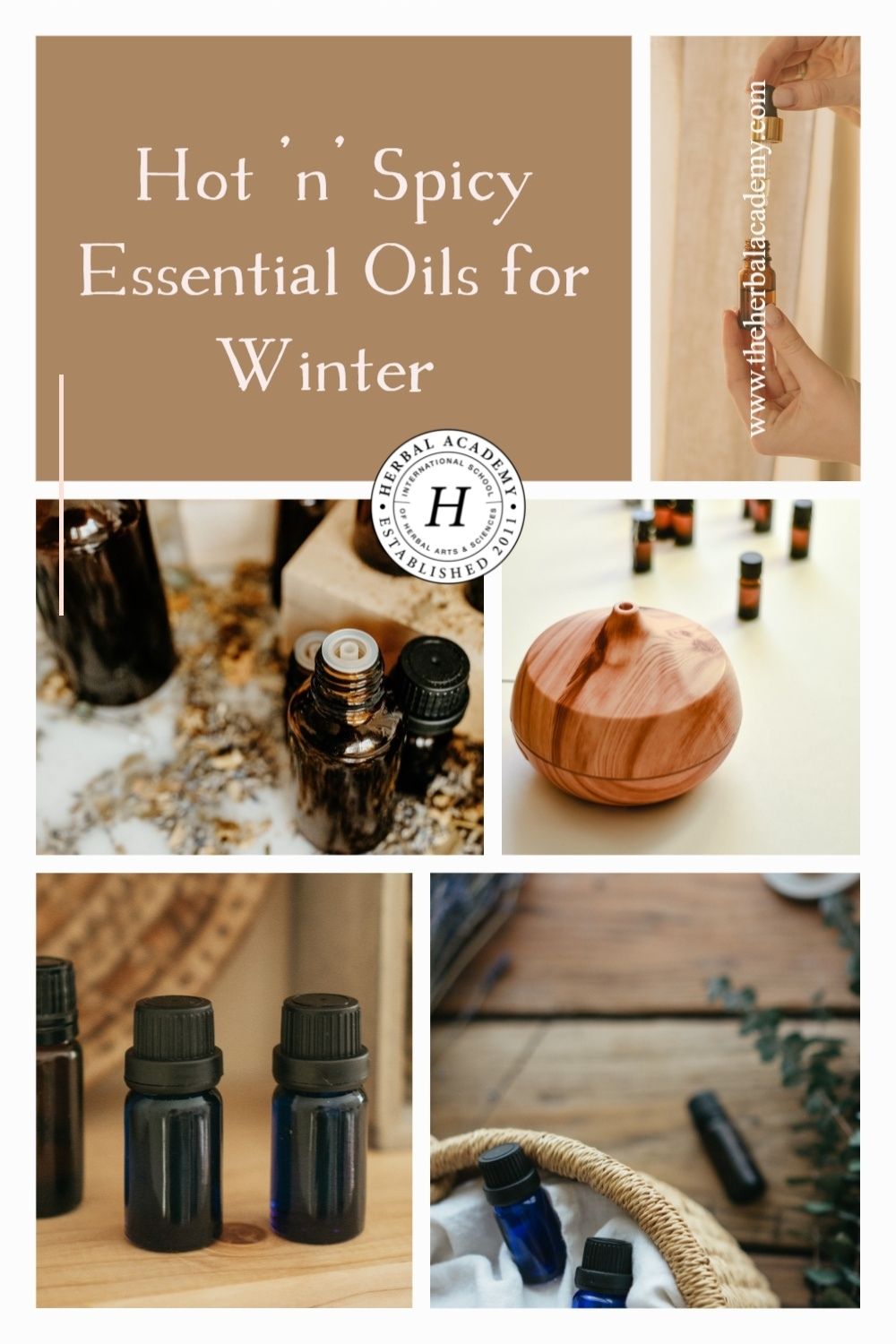 REFERENCES
REFERENCES
Battaglia, S. (2018). The complete guide to aromatherapy (3rd ed.). (Vol 1: Foundations & Materia Medica). Black Pepper Creative.
Holmes, P. (2016). Aromatica: A clinical guide to essential oil therapeutics. (Vol 1: Principles and profiles). Singing Dragon.
Holmes, P. (2019). Aromatica: A clinical guide to essential oil therapeutics. (Vol 2: Applications and Profiles). Singing Dragon.
Schnaubelt, K. (1999). Medical aromatherapy: Healing with essential oils. Frog Books.
Tisserand, R., & Young, R. (2014). Essential oil safety (2nd ed.). Churchill Livingstone Elsevier.







